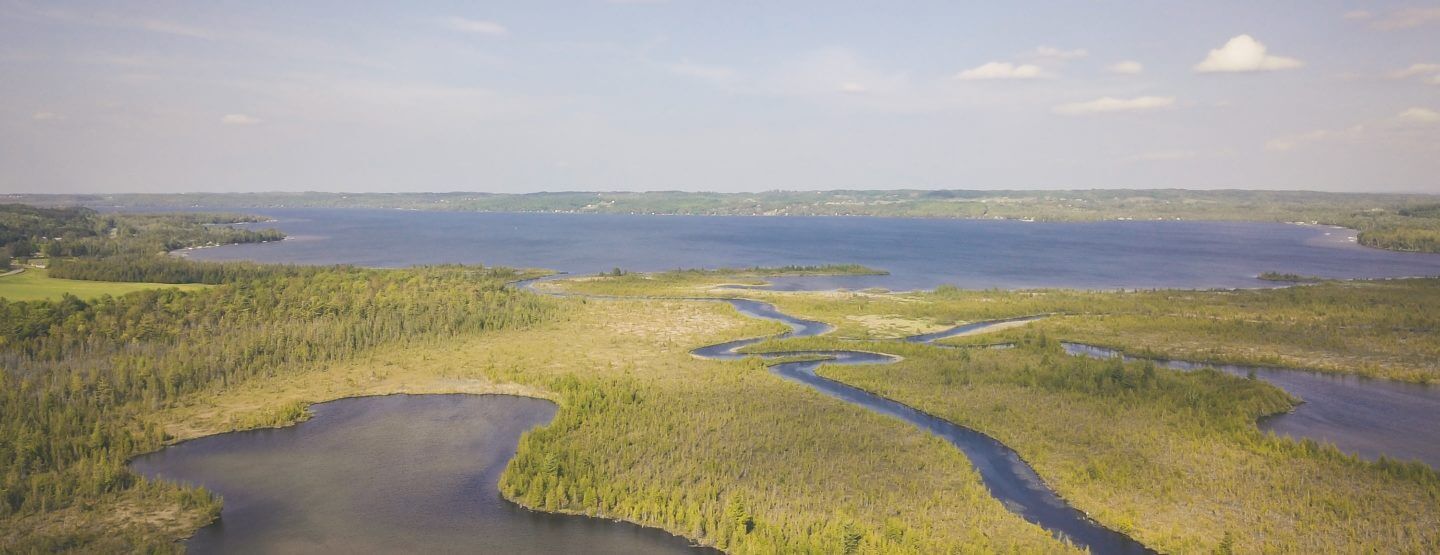80-Acre Addition Along with State Land Swap Will Provide New Access and Fantastic Views
Conservancy founders Ed and Bobbie Collins remember well the trip they took to Chicago some 30 years ago in hopes of protecting an incredible piece of property along the Solon Swamp. It was the late 1980s, and they had managed to set up a lunch meeting with the landowners, Mr. and Mrs. Liu. As the miles ticked by, they talked about their dream of protecting this unique property and other parcels near it—an area known today as the Cedar River Preserve.
The Solon Swamp was among the fledgling organization’s highest priorities: it is an undisturbed wetland complex with an amazing array of plant and animal life. The wetlands along the Cedar River—also known as Victoria Creek—serve to cleanse and protect much of the water that enters Lake Leelanau. “We wanted to buy the property outright and thought we could make that work,” says Bobbie. “Brian Price (the Leelanau Conservancy’s founding executive director) had taken us up there to see the property, and we fell in love with it. We knew that given the fantastic views, it would certainly be developed someday. Brian put us in touch with the family.”
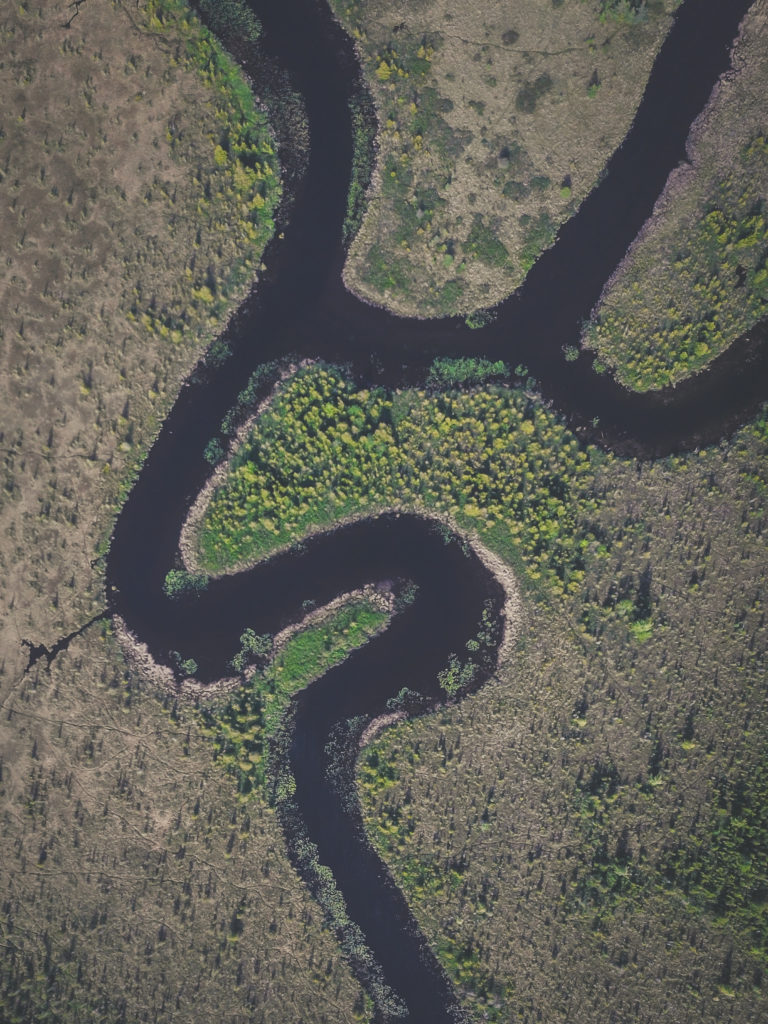
On the long drive to Chicago, Ed and Bobbie pondered what they might say but in the end, their meeting was a non-starter. “They weren’t interested in selling,” says Ed. “The answer was, ‘not now, but maybe someday.’ Which is why Brian reached out regularly to the family, even after Mr. Liu died, but the answer was always no, thank you.”
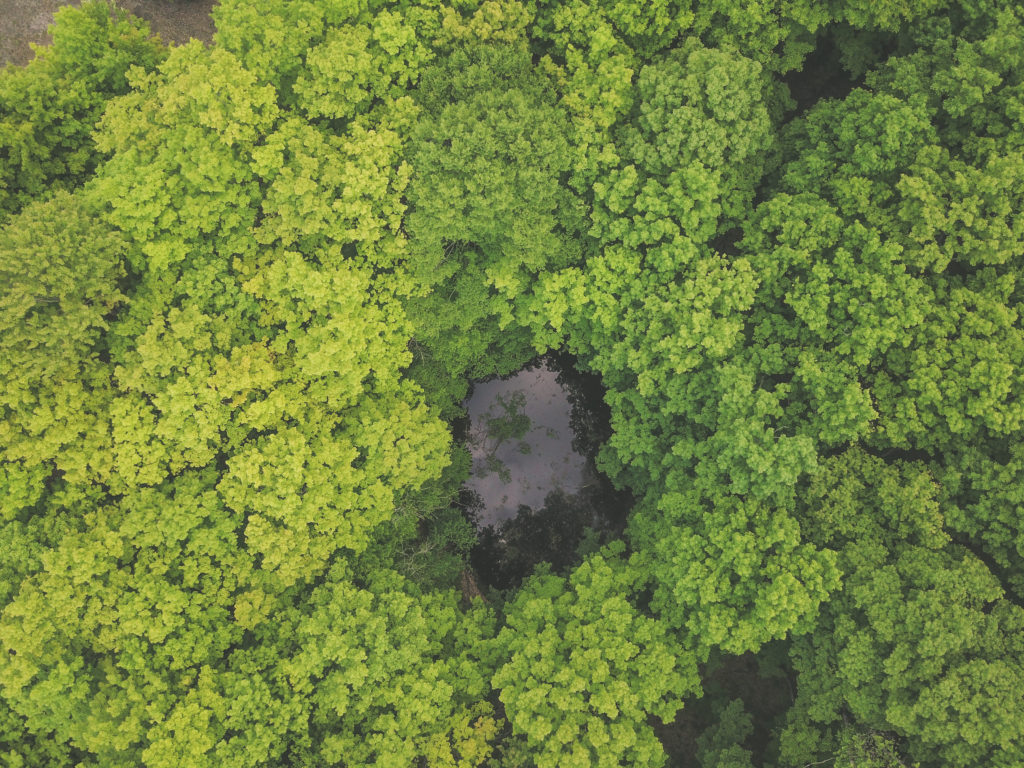
After Brian retired, the property stayed on the Conservancy’s radar. One night in April, Director of Land Programs Matt Heiman says his phone buzzed; it was an email from co-worker Yarrow Brown. “I snapped to attention when I saw the subject line: ‘Fan Liu property,’” says Matt. Yarrow had forwarded a note from a Realtor with the tip that the long-sought-after 80-acre property had just gone on the market. It was listed for $450,000.
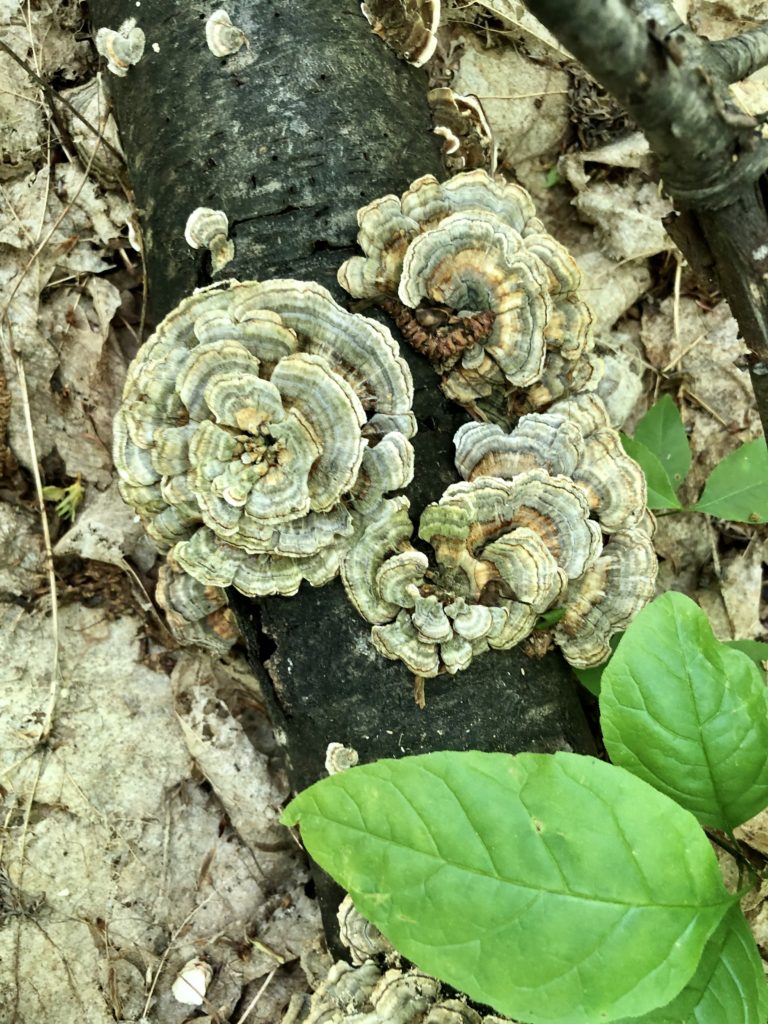
The Conservancy had to act quickly. In addition to the property’s 20 acres of wetlands, there are 60 acres of mesic northern hardwoods that shelter beautiful wildflowers like trillium and squirrel corn. An extended ridgeline overlooks a geologic feature known as a kettle hole, which with current high groundwater levels forms a pond on the hillside. The ridge also offers sweeping views of South Lake Leelanau and the Cedar swamp. In other words, prime home sites with fantastic views in all directions.
The land is, in fact, one of the last large, undeveloped parcels overlooking Lake Leelanau. “It also represents the only viable way to reach the Cedar River Preserve on foot,” says Matt. “At the base of the ridge the property includes 300 feet of shoreline on an unnamed inland lake connected to the Cedar River.” Some very unique and sensitive wetland plants such as rare orchids (grass pink and rose pogonia orchids), rare sedges and carnivorous plants (pitcher plant and sundew) exist in the area.
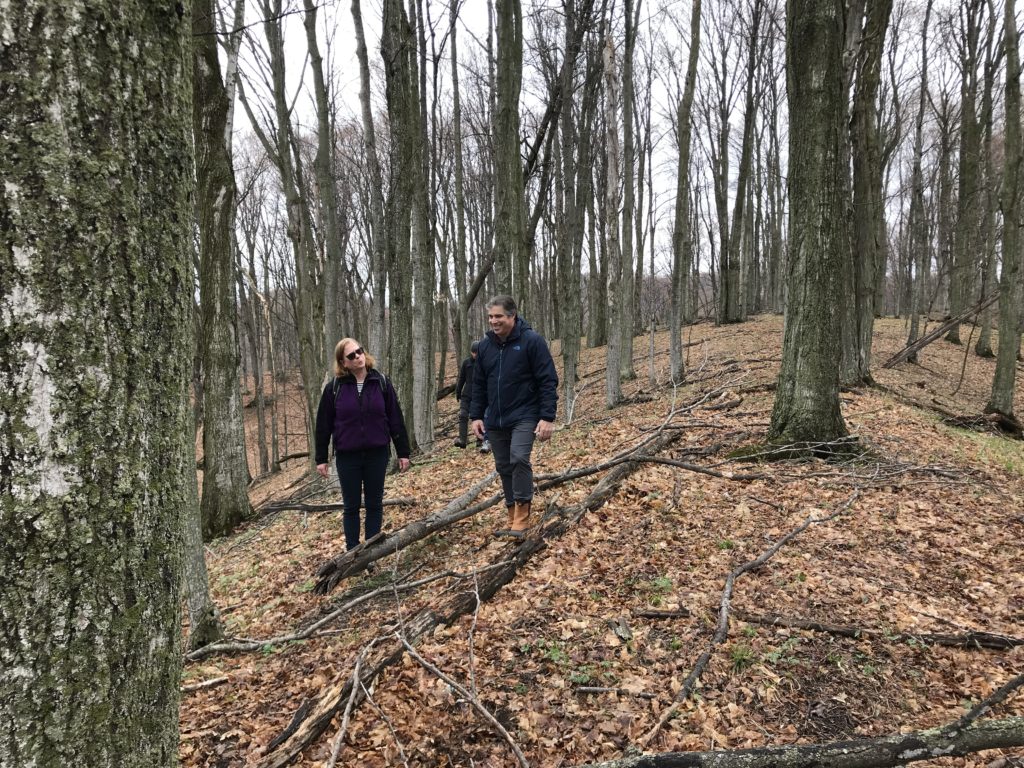
Within days the Land Protection Committee met and authorized a purchase agreement pending board approval. Two weeks later, the Board signed off on the deal.
Around the same time, a land swap with the State of Michigan that had been in the works for four years was finalized. The Conservancy traded parcels that would consolidate its holdings around where the Cedar River empties into Lake Leelanau. As a result the Conservancy gained ownership of the most ecologically sensitive parcels. In the exchange, the State also consolidated its holdings, and acquired dry land parcels friendly to hunters (see sidebar.)
“The timing was incredible,” says Conservancy Chairman Steve Martineau, who serves on the Land Protection Committee. “We’ve ended up with this whole block of ecologically significant land and it’s just been such a win-win for us, for the state and for the public overall.”
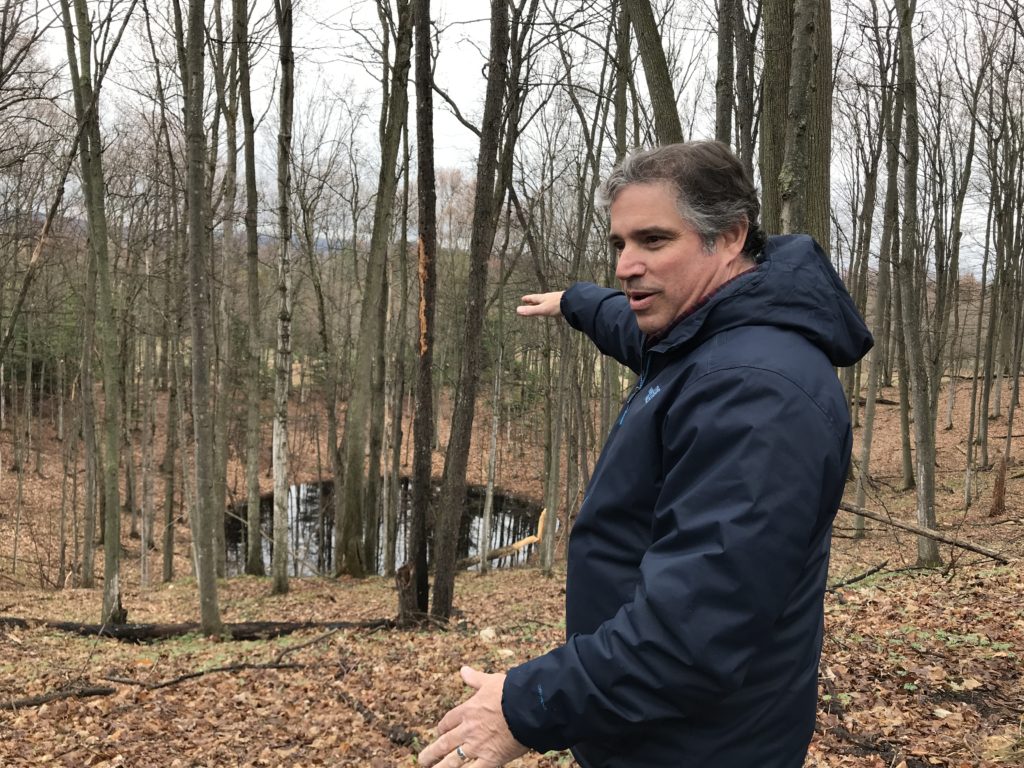
There was literally no time to fundraise for the project. “It was a now-or-never kind of opportunity,” says Tom Nelson, Executive Director. “And, the real credit for pulling this off goes to our donors. We were fortunate to have the funds on hand that gave us the wherewithal to make the purchase. And that is an amazing thing.”
Tom’s vision for the property? “We are excited to open up these previously inaccessible lands to the public, whether it’s the spectacular ridge or the lowlands that lead to two small lakes,” he says. “We think we can create one of the Leelanau Conservancy’s most spectacular trails, given the views from the ridge. However, we’ll need to raise the funds to build trails on the upland and a possible viewing platform.”
In early June, Ed and Bobbie visited the office, and Tom surprised them with the good news that the deal was just about to close. “We are just amazed at how the work from our earliest days has come full circle,” says Bobbie. “We couldn’t be more thrilled.”
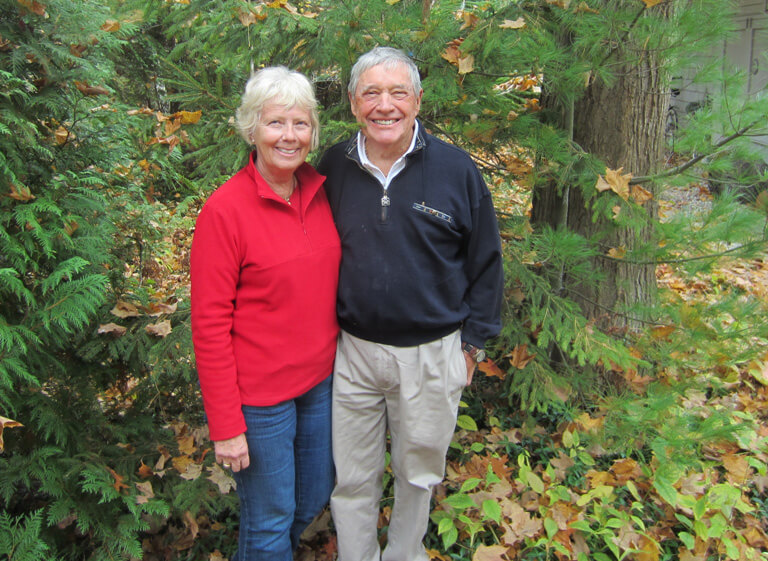
Brian Price, who grew up exploring the Cedar River complex, was also happy to learn the news. Under his tenure as executive director, the Cedar River Preserve grew to over 400 acres. But the Fan Liu land was always in the back of his mind. “Sometimes,” he says, “even 30 years later, things can fall your way.”
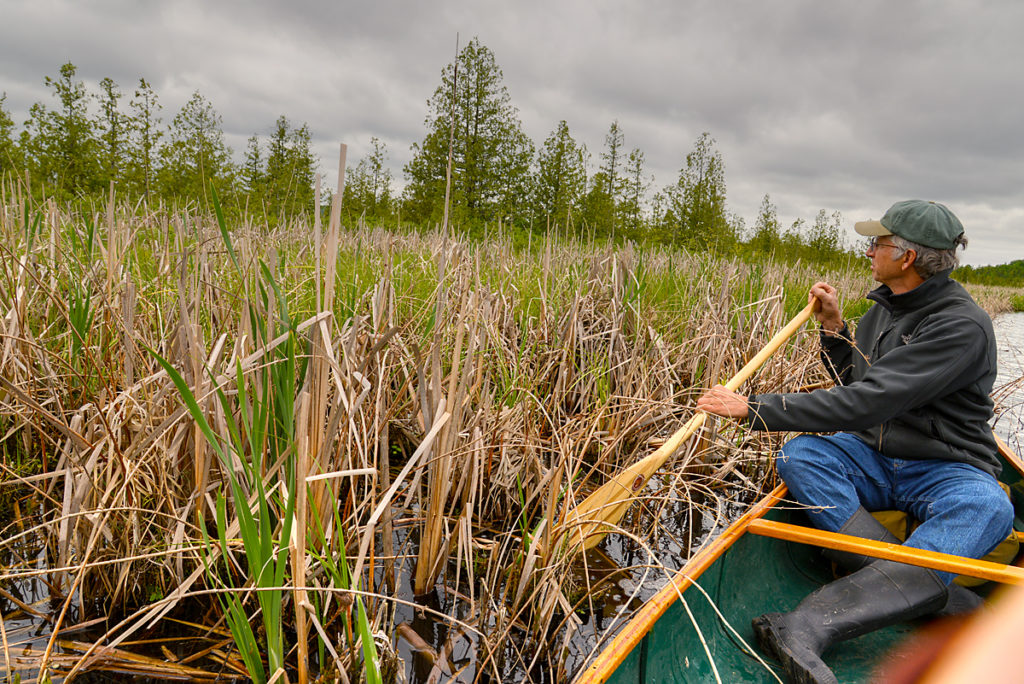
The Grand Land Swap: Working with the DNR to Consolidate Holdings and Habitat
In May, a land swap with the State of Michigan that had been four years in the making was finalized. Conservation Easement Program Manager Yarrow Brown shepherded the process, where six parcels within the Solon Swamp changed hands. “We now own over a mile of frontage along the mouth of the river and both of the inland lakes, and that’s huge,” says Yarrow.
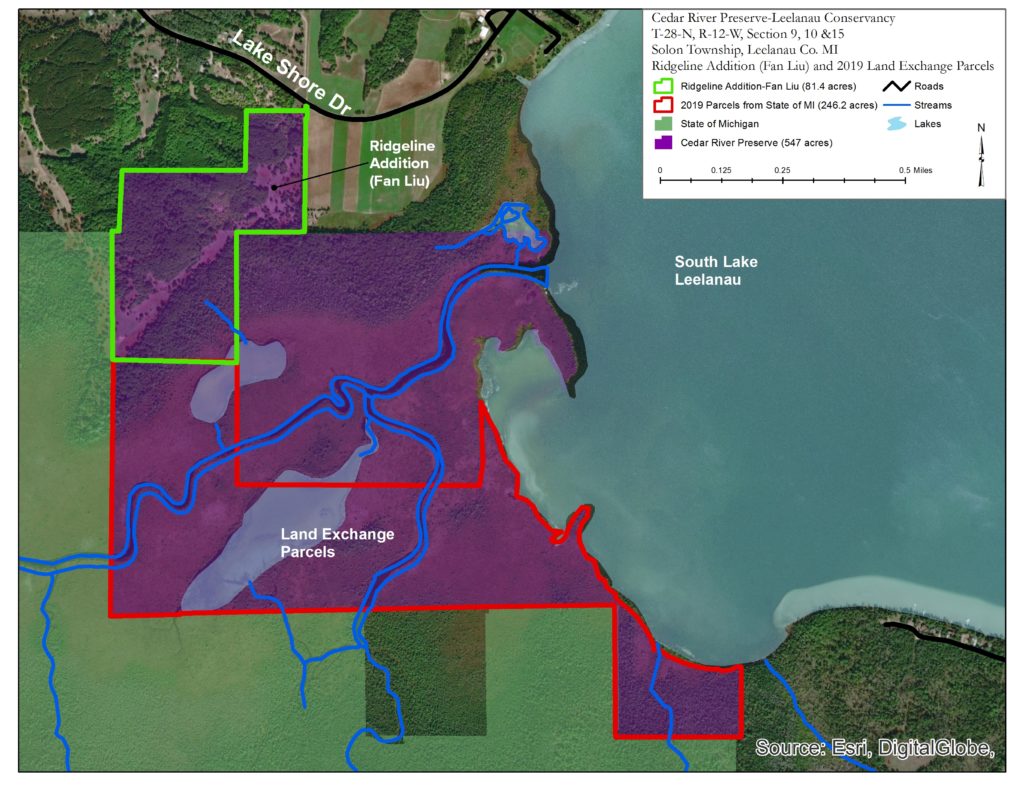
“There are over 260 different plant species in this area,” adds Yarrow. “Habitat for wildlife and plants and protecting water quality is why it was so important to protect the mouth of the river. All the water in the South Lake Leelanau watershed flows through the wetlands to the lake.”
Every natural area has something called a “Floristic Quality Index.” That’s like a report card rating a place’s ecological value. The Cedar River Preserve has a score of 91.1–the highest of any Conservancy natural area. (Areas with FQIs greater than 50 are extremely rare and represent areas of significant native biodiversity.)
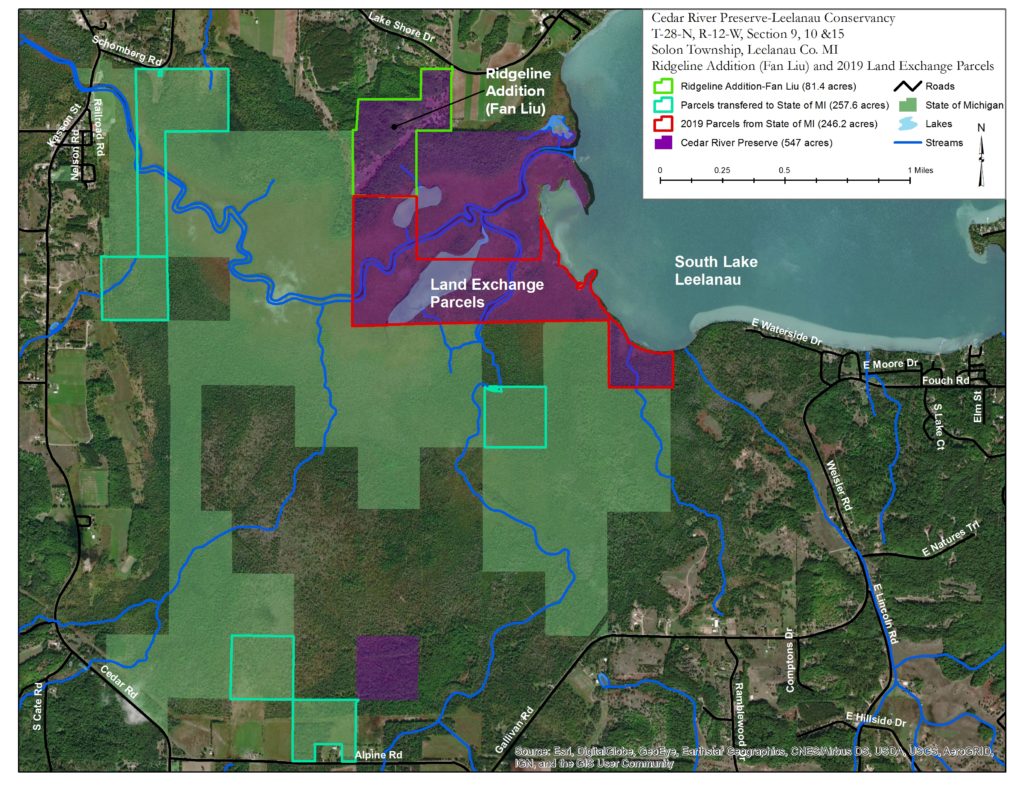
The Leelanau Conservancy and the State of Michigan have a common goal—preserving land for the public good. However the priorities of each entity and management practices can differ, and therein lies an opportunity. Both entities seek to consolidate their holdings for ease of management, and want to own land that fits in with their priorities.
In the case of the Solon Swamp, the Conservancy wished to own and steward those parcels around the mouth of the river, where it meets Lake Leelanau, because these parcels are the most ecologically sensitive, and are the most likely to impact water quality. The Conservancy’s management practices in this area are basically to leave the land alone, and to let the river serve as a water trail for canoers and kayakers.
Luckily, the State of Michigan has a mechanism in place that authorizes the exchange of lands that have equal or greater value: Public Act 238. The State’s goal: “To improve management and enhance the public’s enjoyment of state recreation by acquiring private parcels that lie within the state’s project boundaries.”
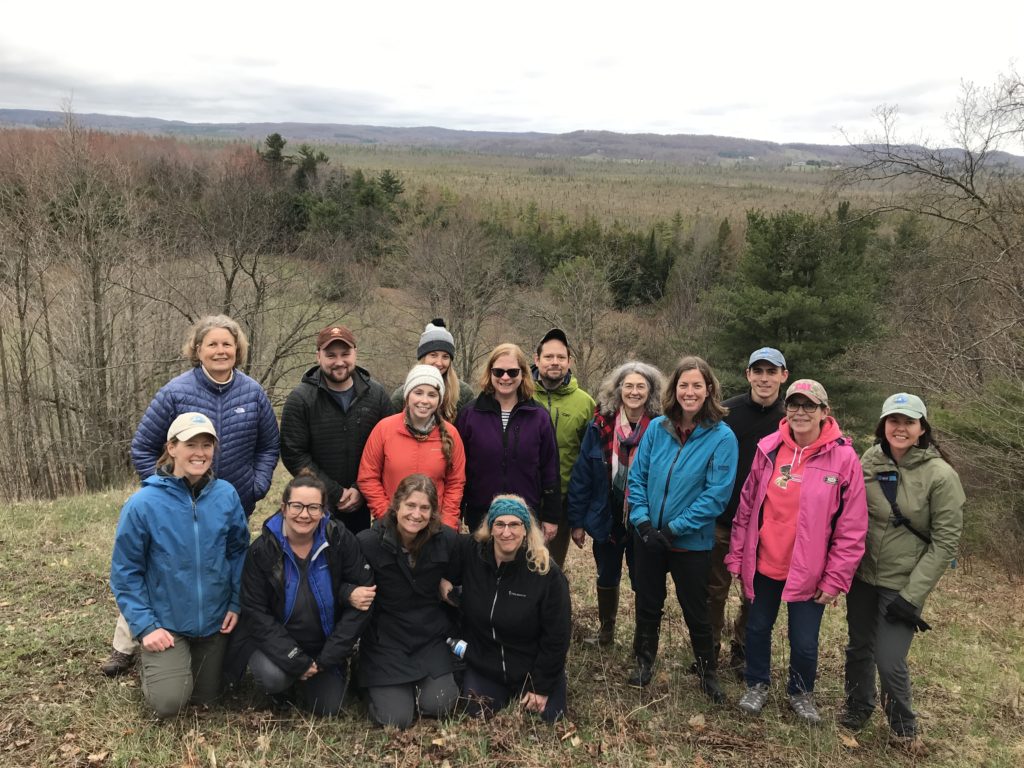
“We’re proud of our own Yarrow Brown, who did a superb job in coordinating a very complex transaction,” says Tom. “Now, the consolidation of these lands and waters into a contiguous area enables the Conservancy to enhance the long-term ecological health of this incredibly special resource that will be appreciated by its inhabitants—the plants and animals that call this place home—and the people who love the outdoors. This truly is Nature in one of its finest forms.”

